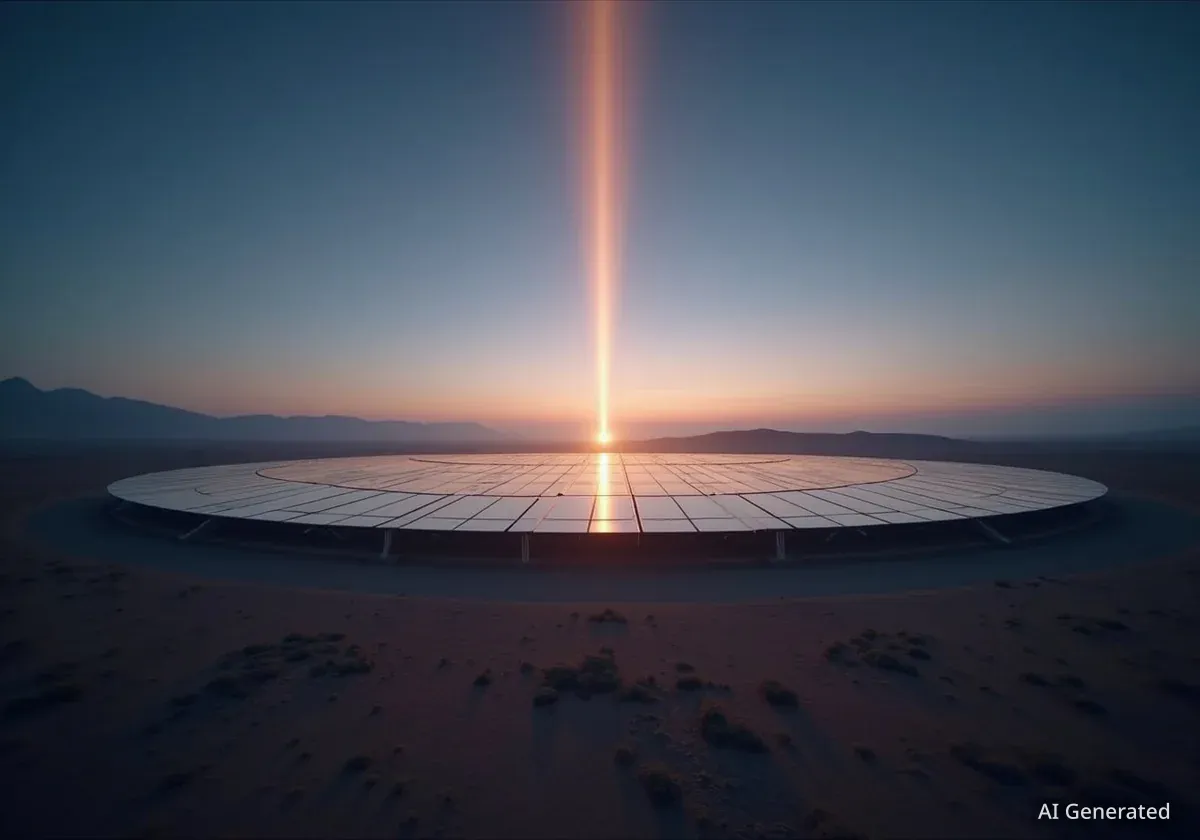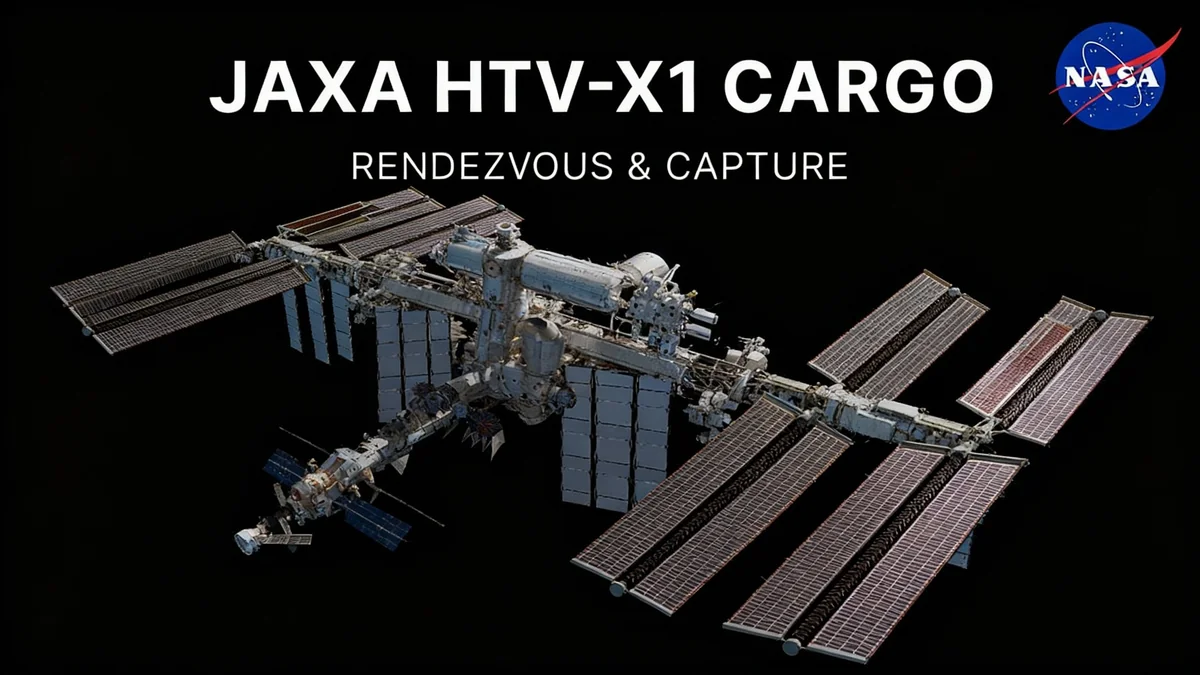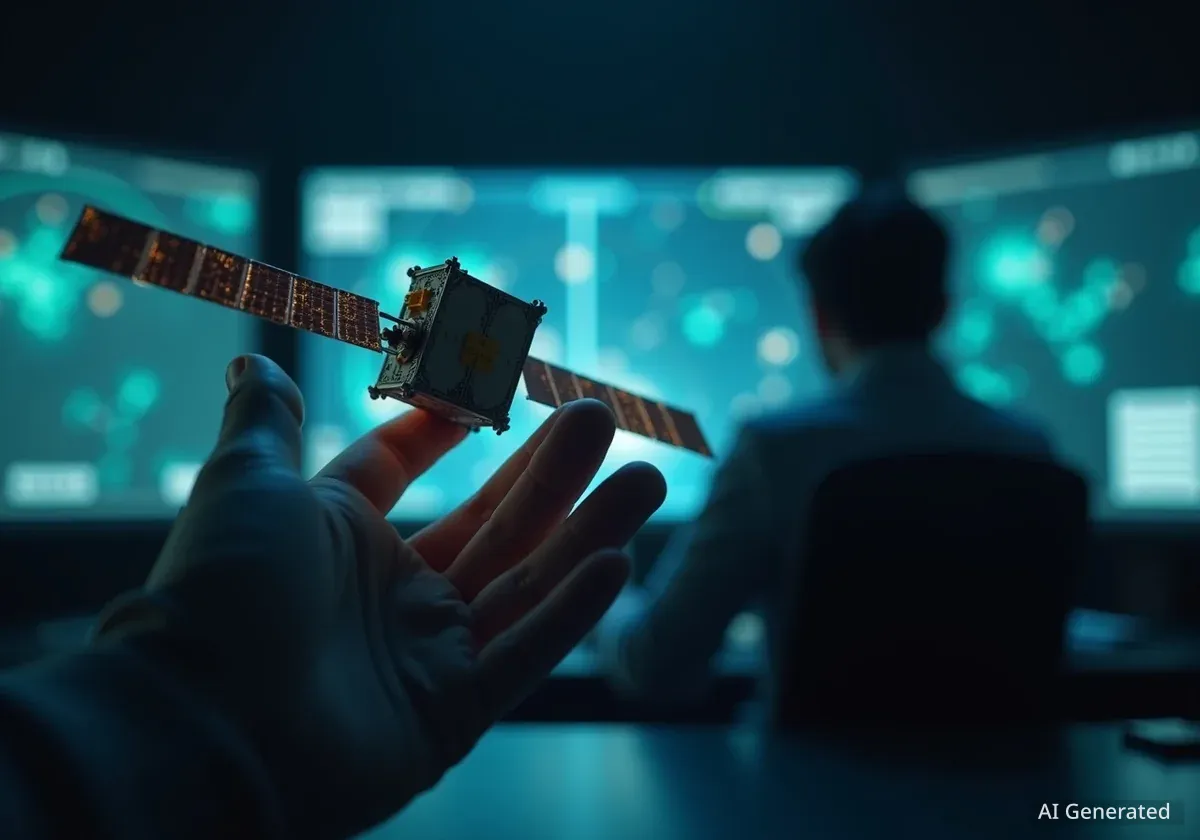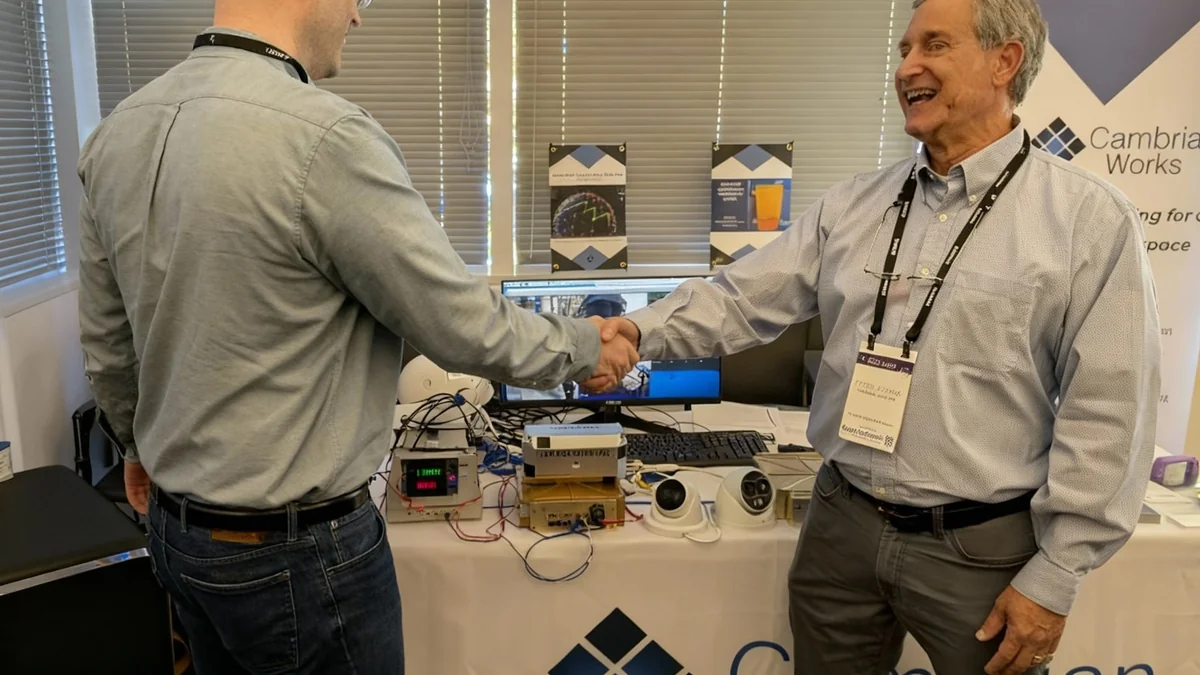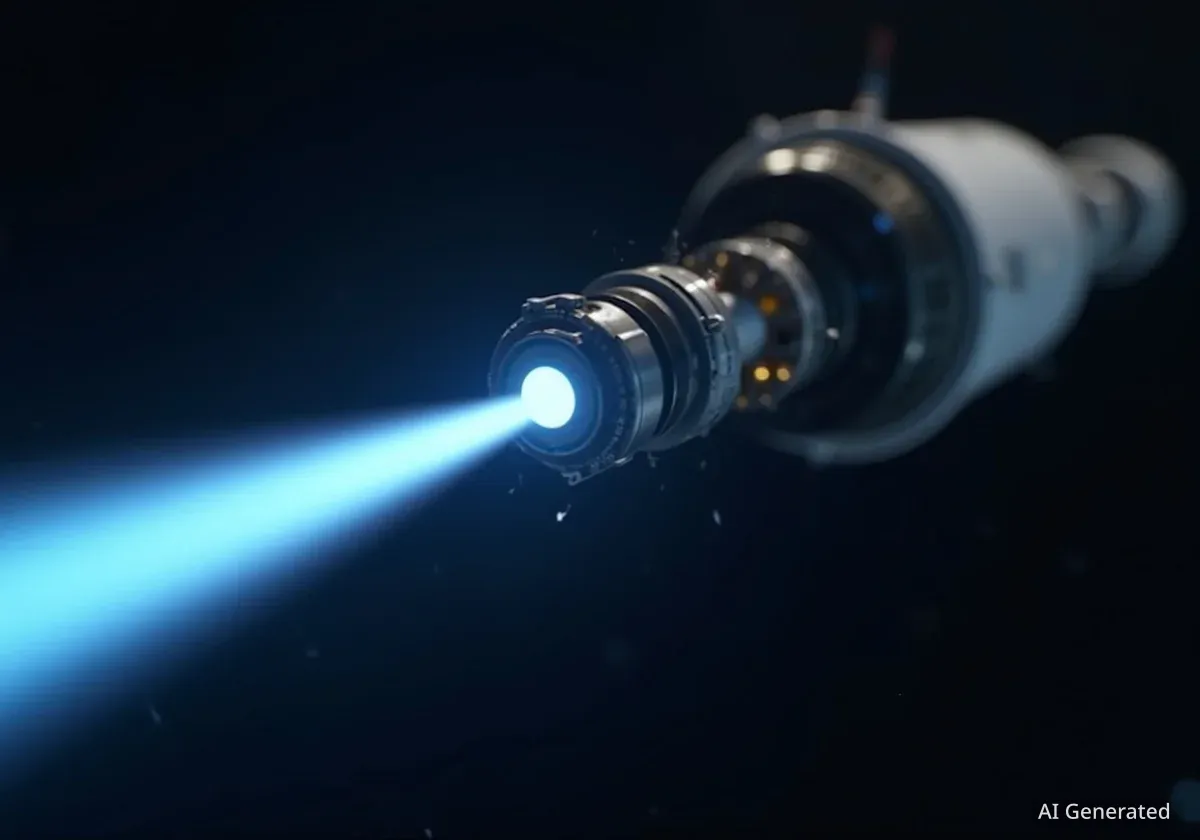A new documentary titled “Bright Harvest: Powering Earth From Space” is highlighting the work of scientists at the California Institute of Technology (Caltech) on space-based solar power. The film focuses on the university's Space Solar Power Project (SSPP), which recently achieved a major milestone by successfully beaming detectable energy from an orbiting satellite to a receiver on Earth.
This achievement represents a significant step toward a technology that could one day provide a constant, global supply of clean energy, unaffected by weather or time of day. The documentary explores the science, challenges, and potential of harvesting solar energy in space and transmitting it wirelessly to the ground.
Key Takeaways
- A new documentary, “Bright Harvest: Powering Earth From Space,” covers Caltech's work on space-based solar power.
- The film features Caltech's Space Solar Power Project (SSPP), which successfully demonstrated wireless power transmission from orbit in 2023.
- The project's in-space experiment, MAPLE, proved that solar energy can be collected in space and beamed to Earth.
- Space-based solar power has the potential to offer a continuous source of clean energy, overcoming the limitations of terrestrial solar farms.
The Documentary and Its Focus
“Bright Harvest” provides an inside look at the Caltech team behind a groundbreaking energy experiment. The film documents the journey of the SSPP, from its conceptual stages to the successful in-orbit demonstration. It features interviews with the key scientists and engineers who have dedicated years to solving the complex challenges of space-based solar power.
The documentary aims to explain the science behind the technology in an accessible way. It details how large, lightweight structures in orbit could collect sunlight, convert it into electricity, and then transmit it as microwaves to receivers on Earth. This process would allow for energy collection 24 hours a day, 7 days a week, a major advantage over ground-based solar panels that are limited by nighttime and cloud cover.
According to filmmakers, the documentary also explores the broader implications of this technology. It touches on how a reliable, space-based energy source could address global energy demands, reduce carbon emissions, and provide power to remote or disaster-stricken areas.
A Concept Decades in the Making
The idea of space-based solar power is not new. It was first proposed in 1968 by American scientist Peter Glaser. However, the immense technical and financial hurdles, such as the high cost of launching heavy equipment into orbit, have historically prevented the concept from becoming a reality. Caltech's project marks one of the most significant practical advancements in the field in over 50 years.
Caltech's Space Solar Power Project
The work featured in the documentary is part of Caltech's Space Solar Power Project (SSPP). This ambitious research initiative was made possible by a significant donation of over $100 million from philanthropist Donald Bren, a Caltech life trustee. The project's goal is to develop the scientific and technological innovations necessary to make space-based solar power a viable energy source.
The SSPP team is co-directed by a trio of Caltech professors, each bringing a unique area of expertise:
- Ali Hajimiri: Bren Professor of Electrical Engineering and Medical Engineering, focusing on the wireless power transmission system.
- Sergio Pellegrino: Joyce and Kent Kresa Professor of Aerospace and Civil Engineering, specializing in the design of large, lightweight space structures.
- Harry Atwater: Otis Booth Leadership Chair of the Division of Engineering and Applied Science, whose work centers on high-efficiency photovoltaics (solar cells).
Their collaborative effort led to the development of a prototype satellite, the Space Solar Power Demonstrator (SSPD-1), which was launched into orbit in January 2023.
Launch and Deployment
The SSPD-1 prototype was launched aboard a SpaceX rocket as part of a rideshare mission. The demonstrator itself weighs about 50 kilograms (110 pounds) and contains multiple experiments to test key technologies in the harsh environment of space.
The MAPLE Experiment A Historic Success
A central focus of “Bright Harvest” is the MAPLE experiment, which stands for Microwave Array for Power-transfer Low-orbit Experiment. This was the component of the SSPD-1 satellite designed to test wireless power transmission. MAPLE consists of a flexible array of lightweight microwave power transmitters controlled by custom electronic chips.
In June 2023, the Caltech team announced a major success: MAPLE had successfully beamed detectable energy to a receiver on the roof of the Gordon and Betty Moore Laboratory of Engineering on Caltech's campus in Pasadena, California. This marked the first time that power had been transmitted wirelessly from space and detected on Earth.
"To the best of our knowledge, no one has ever demonstrated wireless energy transfer in space even with expensive rigid structures. We are doing it with flexible lightweight structures and with our own integrated circuits. This is a first," Ali Hajimiri stated following the successful test.
How MAPLE Works
The MAPLE array uses precise timing control elements to focus its power beam onto a specific location. The transmitters operate at a specific frequency, and the signal is received by a specialized antenna, known as a rectenna, which converts the microwave energy back into direct current (DC) electricity.
During the experiment, the team was able to detect the transmitted signal at the expected time and frequency. The received signal showed a distinct frequency shift, consistent with the satellite's orbital path, confirming that the energy came from the orbiting demonstrator and not from a terrestrial source.
The experiment also successfully beamed energy to a receiver just a foot away from the transmitter on the satellite itself, demonstrating that the system could function and direct its beam in space.
Challenges and the Future of Space Solar Power
While the success of MAPLE is a monumental achievement, the documentary also addresses the significant challenges that remain before space-based solar power can be implemented on a large scale. The primary hurdles are cost, scale, and efficiency.
To be commercially viable, a space-based solar power station would need to consist of a constellation of satellites covering a vast area, potentially spanning several square kilometers. Launching such a massive infrastructure into orbit remains a major financial challenge, though the declining costs associated with reusable rockets from companies like SpaceX are making it more feasible.
Scaling Up the Technology
The SSPD-1 is a small-scale prototype. A full-scale system would require solar collectors and transmission arrays many times larger. The engineering challenge involves creating these large structures to be lightweight enough for launch, yet durable enough to withstand the space environment for years.
Efficiency is another critical factor. While the Caltech experiment proved the concept, the amount of energy transmitted was small. Future research will focus on improving the efficiency of every step in the process, from solar collection and energy conversion to wireless transmission and reception on the ground.
Despite these challenges, the team at Caltech remains optimistic. The successful demonstration has validated their core technologies and provided invaluable data for the next phase of development. “Bright Harvest” concludes by looking toward a future where a constant stream of clean energy from space could help power the world, showcasing a vision that is now one step closer to reality.

